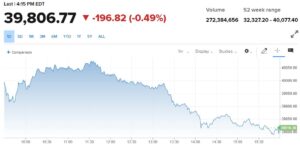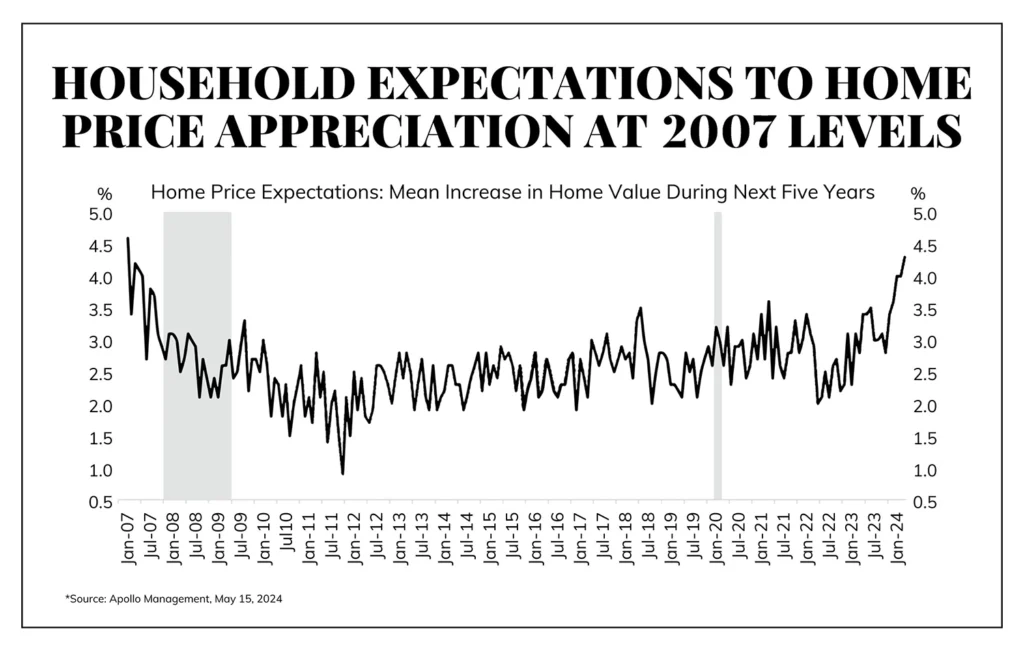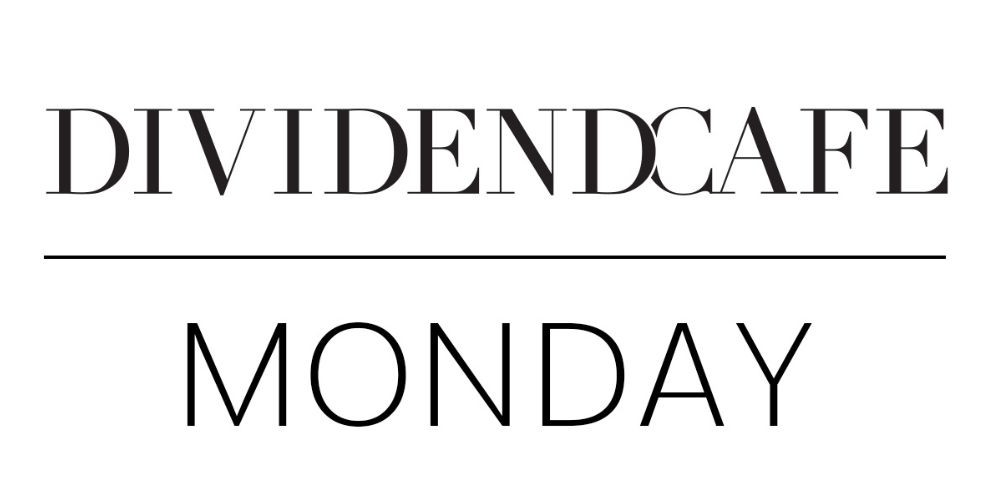Dear Valued Clients and Friends –
So you are getting a double whammy today, as I have done a fair amount of the writing here on various topics I chose to address before a Sunday flight yesterday to a secret out-of-country destination, and co-CIO Brian Szytel has taken on the rest. Two for the price of one!
Dividend Cafe got into the inverted yield curve’s ability to predict a recession, the best indicator of long-term inflation, a few precedents from Japan we may want to avoid, and most importantly, the reality of fear in driving investment decisions. The written version is here (my favorite), the video is here, and the podcast is here.
|
Subscribe on |
Market Action
- The market traded above the 40,000 level on the Dow for the first few hours this morning before losing momentum early afternoon into the close. The S&P 500 and Nasdaq both registered modest gains, and yields were up slightly across the curve.
- The Dow closed down -196 points (-0.49%), while the S&P 500 was up +0.09% and the Nasdaq was up +0.65%.

- Don’t look now, but stock indices in China are up over 20% YTD, and there have been more signs of continued momentum with a higher percentage of stocks above their 200-day moving average. These markets have gone nowhere for decades, which is why new asset flows we have seen remain abysmal and still reluctant to buy in even after this year’s move. Things left for dead like this have a funny way of quietly regaining traction before most even notice.
- The ten-year bond yield closed today at 4.44%, up 2 basis points on the day.
- Top-performing sector for the day: Information Technology (+1.32%)
- Bottom-performing sector for the day: Financials (-1.21%)
Top News Stories
- Iran’s President Raisi and Foreign Minister Amirabdollahian, along with six other passengers, died in an accidental helicopter crash last night. The crash appears to have been caused by inclement weather complications and an attempt to hard land the decades-old aircraft. Iran’s 85-year-old Supreme Leader since 1989, Khamenei, said the country’s policy and governance would continue uninterrupted.
Public Policy
- After various lobbying efforts from major banks, the Federal Reserve, FDIC, and Office of the Comptroller are considering a new plan to reduce the already slated increase in large bank capital reserves by 20%.
- The IRS now has over a million applications to qualify for the Employee Retention Tax Credit, which could put up to 100B in tax refunds into the economy going into the election this year.
Economic Front
- The Biden administration’s escalation of the Trump trade war with China may or may not be good politics (we doubt it is). It may or may not be ironic considering their past criticism of tariffs as imposed by Trump (we think ironic is not the best word). And it may or may not have an economic impact (there are many nuances here). But what we do believe it does is escalate geopolitical tensions. Again, that may or may not be for a good cause, depending on your point of view, but we simply want to point out that these policies also support the continuing narrative around themes like deglobalization and regionalization.
Housing & Mortgage
- Some interesting tidbits … About 25% of U.S. households own their homes without a mortgage, about 35% of Americans rent, and about 40% of Americans own their homes with a mortgage.
- New housing starts were up +5.7% in April hitting a 1.36 million annualized rate, which was below consensus expectations of 1.42 million. New starts are down -0.6% from a year ago and a year ago they were pitiful.
- What could go wrong here?

Federal Reserve
- We are sitting at a 91% chance in the fed funds futures market of no rate move at the June 12 FOMC meeting (that 9% is a far tail opportunism that will roll off in weeks ahead). The July meeting shows a 70% chance of no move at the July meeting, so a 30% chance of some cut. Unless and until the odds move above 50% for a rate cut, I would assume a summer cut is off the table. And that brings us to September, where futures presently show a 35% chance of staying still again but a 65% chance of the fed funds rate either being one-quarter point lower (49%) or a half point lower (15%). This is where September is tricky, too, because 65% implied probability, over four months out, is hardly high conviction.
- A busy Fed speak day with comments from Jefferson, Bostic, and Mester below. The general message being the data has yet to compel easing monetary policy on rates (although they already curtailed QT). All things equal, we feel a real fed funds rate of 1% above inflation is reasonable target and they start moving in that direction later this year.
- Fed Vice Chair Jefferson noted that while April’s inflation reading was encouraging and the labor market remains strong, the increases in housing rents may keep housing services inflation elevated for some time.
- Atlanta’s Fed Bostic said inflation would continue to fall into 2025, but the data has continued to be bumpy, and his business leader contacts have cautioned about early signs of slowing business momentum in the economy.
- Cleveland Fed president Mester said inflation progress has stalled, and it’s too soon to tell which path it will take before they lower rates.
Oil and Energy
- WTI Crude closed at $79.19, -0.49% on the day.
- We have seen some softening in refinery demand, with higher supply levels as rates and inflation begin to depress consumer and industrial demand globally. This may lead to the June 1st OPEC+ decision to leave production curbs in place. Even aside from that, though, we have seen higher supply levels from non-OPEC countries like the US, with refinery utilization down a few percentage points versus a year ago.
Ask TBG
| “With continued high federal deficits, how should we be positioning for a declining U.S. Dollar?” ~ John T. |
| I do not believe high federal deficits have anything to do with the state of the U.S. dollar. Deficits are up 1,000% from where they were decades ago, and the dollar has done nothing but fortify its position against global currencies. The problem with asserting that our fiscal (and monetary) irresponsibility will lead to a declining dollar is that it presupposes other countries are behaving any better (which. they. are. not.). A currency doesn’t rise or fall other than in relationship to another currency, and dollar bears have thus far been unable to identify what its replacement ought to be. I believe some modest dollar weakening is in order, and it would candidly benefit most U.S. investors if and when it happens, but the more significant weakening some anticipate remains elusive.
~ David L. Bahnsen |
On Deck
- Brian will bring you the daily recap for the next three days.
- David will bring clients the Weekly Portfolio Holdings Report on Wednesday as well as the Dividend Cafe on Friday.
Always fun to join in the Monday long-form Dividend Cafe alongside David while he is traveling for a few days, and I wish you all a lovely Monday evening. Please reach out with your questions as always.
With regards,
David L. Bahnsen
Chief Investment Officer, Managing Partner
Brian T. Szytel
Co-CIO, Senior Managing Director, Partner
The Bahnsen Group
www.thebahnsengroup.com
The Dividend Cafe features research from S&P, Baird, Barclays, Goldman Sachs, and the IRN research platform of FactSet.



